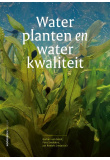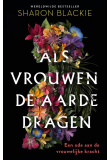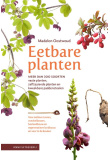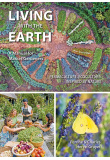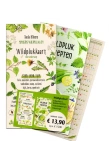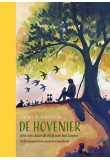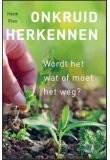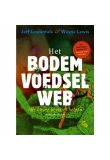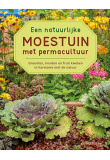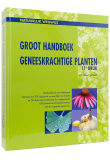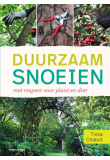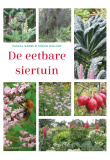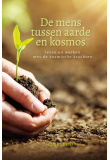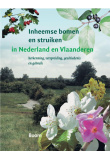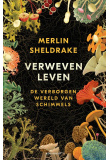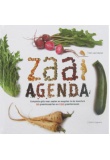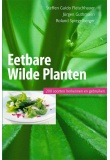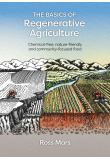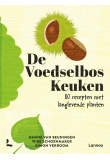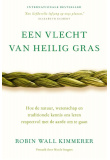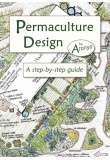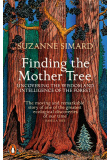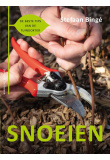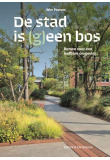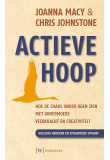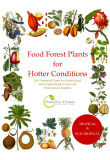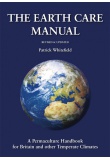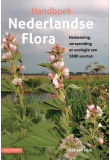Ben Falk introduces students to his approach and to the history of his sites. He talks about how he looks at climate analogues around the world to inspire his ways to work with natural systems where he lives.
Ben Falk takes students for a tour of the Whole Systems Design research farm II, where they look primarily at swales planted with different plant species.
Mark Krawczyk explores different ways to define the word permaculture, and touches on the principles and ethics. He explains how permaculture is more like a general set of guidelines rather than strict rules that can be applied anywhere.
Ben Falk teaches students how to use a laser level to establish lines on contour or with a given slope. Erik Kocho-Schellenberg then goes on to accomplish the same task with an A-frame, a simple device anyone can make.
Mark Krawczyk introduces students to an important step of the design process: goals articulation. The intention being to clearly understand the client’s (or the designer’s) goals before even setting off to work on a design proposal.
Mark Krawczyk teaches students how to draw a basic map using two easy techniques: extensions with offset and triangulation. They learn how to measure accurately the position of different elements in space to start placing them on a map.
Mark Angelini and Erik Kocho-Schellenberg discuss some of the principles and ethics of permaculture and invite students to think about how they can use some of them in designing regenerative systems.
Wilson Alvarez and Ben Weiss introduce the idea of zone 5 permaculture, and talk about how humans can play their role of keystone species in helping regenerate wild spaces. They also talk about the role formerly played by extinct megafauna in nutrient cycling and how humans can play a part in replacing them. They teach students a set of observation skills aimed at helping them better understand the baseline of wild environments.
Sean Dembrosky talks about his frugal but fulfilling lifestyle. He explains how he uses the five R’s (refuse, reduce, reuse, repair and recycle) to dictate a lot of what he does, and how the concept of barter is key to the way he lives.
2.01 Plant propagation fundamentals [10:25]
Eric Kocho-Schellenberg introduces students to basic techniques of plant propagation, touching on nut seed germination and scarification, cuttings of the ribes genum, as well as layering and air layering.
2.02 The design process: Site analysis and assessment [15:26]
Mark Krawczyk details the site analysis and assessment process, largely based on the interpretation of a site in relation to the scale of permanence.
2.03 Grafting fundamentals [15:59]
Trevor Newman introduces different grafting techniques for bench grafting and top working, including whip and tongue, cleft grafting, and rind grafting.
2.04 Pond design principles [05:49]
Ben Falk discusses certain elements related to pond design, including watershed, the creation of planting shelves and habitat, and expresses doubts about ponds’ ability to affect a site’s hardiness zones.
2.05 Soil science basics [22:18]
Mark Krawczyk and Erik Kocho-Schellenberg talk about the basic components of soil (clay, sand, silt) and discuss soil texture, soil horizons and ph. They also talk about the succession of bacteria-dominated towards fungi-dominated soils, as well as beneficial relationships between trees, fungi, and microorganisms in the soil.
Mark Krawczyk then accompanies students as they dig several soil test pits and learn to distinguish differences between soil samples.
Finally, Erik Kocho-Schellenberg and Mark Angelini demonstrate how to perform a basic soil composition test by mixing a soil sample in a jar of water.
2.06 Introduction to scything [06:57]
Sean Dembrosky explains what to look for when buying a scythe, and presents the different types of blades. He also explains how to sharpen the blade and demonstrates the proper scything technique.
2.07 Introduction to wood carving [08:07]
Mark Angelini demonstrates how you can use a hand axe to carve simple wooden objects (in this case a spatula) from round pieces of wood.
2.08 Succession walk and observation [08:37]
Trevor Newman takes students for a walk along the forest edge to discuss concepts of succession, and invites them to observe different aspects of the environment to start understanding how humans can play a role in steering the natural succession of natural systems.
2.09 Tree planting fundamentals [05:27 ]
Ben Falk demonstrates his tree planting technique, and discusses soil amendments and inoculation.
2.10 Gardening with hand tools [07:41]
Erik Kocho-Schellenberg describes appropriate posture for using different hand tools in order to avoid injuries, and recommends certain time-saving tools, such as the wheel-hoe and the Earthway seeder.
2.11 Introduction to keyline design [12:39]
Mark Krawczyk introduces the concept of Keyline design, which aims at storing and redistributing water resources on a piece of land to accelerate regeneration. He also describes the use of the Yeomans plow as one of the tools used in implementing keyline designs.
DVD3
3.01 Homestead site visit [31:45]
Ben Falk takes students for a visit around his homestead to look at different aspects of his permaculture systems. He presents his shitake mushroom laying yard, and talks about the history of the site and the techniques he used to regenerate certain areas using swales. He also discusses his rice growing techniques.
3.02 Introduction to herbal medicine – part I [05:54]
Erica Koch Falk introduces different medicinal plants, describes their properties and explains when and how to harvest them. She talks about calendula, lavender, comfrey, yarrow and schisandra.
3.03 Food forest fundamentals [08:45]
Sean Dembrosky introduces the concept of food forest, presenting the different vegetation layers and giving examples of plant species in each layer. He also talks about plant guilds, and talks about the technique of “chop and drop”.
3.04 The Whole Systems Design business [10:52]
Cornelius Murphy describes the process through which site consults are undertaken, from the initial contact with the client, to the site visit, to the design of an implementation proposal. He talks about the different software packages the firm uses through different steps of the design.
3.05 Homestead infrastructure [12:49]
Ben Falk takes students around the Whole Systems Design studio and greenhouse, and explains how the buildings were designed to fill their multiples functions. He goes into details describing the wood cook stove that serves multiple purposes.
3.06 Introduction to herbal medicine – part II [12:24]
Erica Koch Falk explains how to use different plants to prepare herbal medicine using a variety of techniques, including infusions, decoctions, and tinctures.
3.07 Handy rope knots [05:32]
Ben Falk demonstrates a series of useful rope knots, from the basic overhand, to the fisherman’s knot, to the trucker’s hitch.
3.08 Seed saving and stratification [06:19]
Trevor Newman demonstrates a seed-saving and stratification technique using seaberry seeds. He uses a process called decanting for separating the seeds from pulp and then shows how to prepare the seeds for cold stratification in a refrigerator.
3.09 Dry stack stone construction [11:44]
Mark Krawczyk introduces students to the basics of dry stack stone construction, discussing ways to lay out your stones to make work easier, and what to look for in the different shapes of stones, and where they can best fit in a stone wall.
3.10 Wood splitting basics [03:33]
Ben Falk demonstrates his wood splitting technique to minimize bending over, and talks about buying cord wood.
3.11 Uncommon fruits for permaculture designs [08:41]
Trevor Newman introduces a varieties of uncommon fruits that can be useful in permaculture designs, or simply to explore for those interested in fruiting trees and shrubs. He talks about the ribes family, pawpaws, and persimmon, as well as nuts trees.
DVD4
4.01 Introduction to wild foraging [13:41]
Mark Angelini takes students for a walk around the property to look at different wild edible plants. He discusses their properties and shares some of the aspects of his foraging practice. He talks about sheep’s sorrel, chokecherry, basswood (tilia), red and white clover, saint john’s wort, wood sorrel, ox-eye daisy and dandelion.
4.02 Green woodworking fundamentals [10:15]
Mark Krawczyk demonstrates the basics of green woodworking by first splitting a piece of round wood with a froe, and then making a round peg using a shaving horse and a draw knife.
4.03 Log inoculation for shitake mushroom cultivation [7:36]
Ben Falk demonstrates how to inoculate logs to grow shitake mushrooms, from drilling holes, to filling them with inoculated sawdust, to tips on how to set up the logs in the laying yard.
4.04 Approaches to forest management [12:32]
Alexander Darr talks about ways we can tell the story of a piece of forested land by observing certain features. Mark Krawczyk goes on to demonstrate how you can determine how well stocked is a stand of wood by using a prsim, and talks about the idea of leaving valuable trees to improve the gene pool. Alexander Darr adds info on the role of fungi in high grading the forest and talks about the importance of snags – standing dead trees – in maintaining the health of the forest.
4.05 Plant propagation fundamentals part II [12:45]
Trevor Newman and Erik Kocho-Schellenberg talk about different plant propagation techniques, insisting on asexual propagation approaches like hardwood, greenwood and root cuttings.
4.06 Woody plant identification [12:00]
Mark Krawczyk discusses ways of identifying woody plants. He touches on branching patterns, leaf shape and color and texture of bark. He also talks about the trees position in succession, largely dictated by their shade tolerance, as a way to help identified species.
4.07 Basic knife sharpening [08:36]
Mark Angelini demonstrates the technique he uses to sharpen knife blades. He talks about different types of sharpening stones and how he sometimes uses a marker to better see what he’s doing.
4.08 Client site consult and design implementation [28:29]
Ben Falk poses as a client and asks the students to come up with design solutions based on his expressed needs and the nature of the site. The issue he describes is related to a water accumulation problem near the barn and on a basketball court on the property. He then evaluates some of the solutions proposed and they proceed to implement what he considers to the be best, which is to dig a swale to capture, infiltrate and redirect water coming off the barn. They then plant perennials on the swale, seed and mulch it.
The instructors
BEN FALK
Ben is a homesteader, permaculture practitioner and teacher. Through his design firm, Whole Systems Design LLC, he has conducted nearly 200 site development consultations across New England and facilitated dozens of courses on permaculture design, property selection, microclimate design, and design for climate change. He’s the author the Resilient Farm and Homestead.
Mark Krawczyk
Mark is a permaculture designer, traditional woodworker, natural builder and community organizer. He owns and operates Keyline Vermont – a permaculture design/consulting business, RivenWoodCrafts – a traditional woodcraft company, is a member of Seven Generations Natural Builders and is a founding member of the community group Burlington Permaculture.
Trevor Newman
Trevor is an amateur pomologist, avid gardener & orchardist, and all-around plant geek. He owns and operates TerraNu Nursery LLC, an edible and useful plant company based in Clarkston, MI, as well an edible landscaping firm called Roots To Fruits Ecological Design. Trevor has taught in Permaculture Design Courses and given presentations to various schools, garden clubs, and community groups on topics such as homesteading, agroforestry, and uncommon fruits. He is the director of the Michigan Nut Growers Association and co-chair of the North American Fruit Explorer’s permaculture special interest group.
Mark Angelini
Mark is a persistent autodidact, having trained alongside a number of prominent landscape and whole-systems design professionals. Aside from his passion for homesteading, food & farming, craft, green woodworking, forestry, and a good sharp tool, he sits on the board of The Apios Institute, teaches & writes about wild edible plants through Eat Here Now, and produces hand carved woodenware. He’s a co-founder of the edible landscaping firm Roots To Fruits Ecological Design.
Sean Dembrosky
Sean owns and operates the Edible Acres project just north of Trumansburg NY. Formally educated in the fine arts, but focused on agriculture for the last decade, Sean has developed a farming system based on permaculture principles and forest farming.
Erik Kocho-Schellenberg
Erik has worked extensively with several indigenous communities on natural resource management and agricultural issues ranging from sustainable coffee production in Mexico to beluga whale management in the Canadian Arctic. He is a biologist and has studied and worked in diverse fields such as genetics, forest ecology, and systems biology. Erik currently works in agricultural extension on a project that is helping develop mid-scale regional production of fresh produce in the Hudson Valley of New York, and is planting a designed semi-natural forest in his free time.

